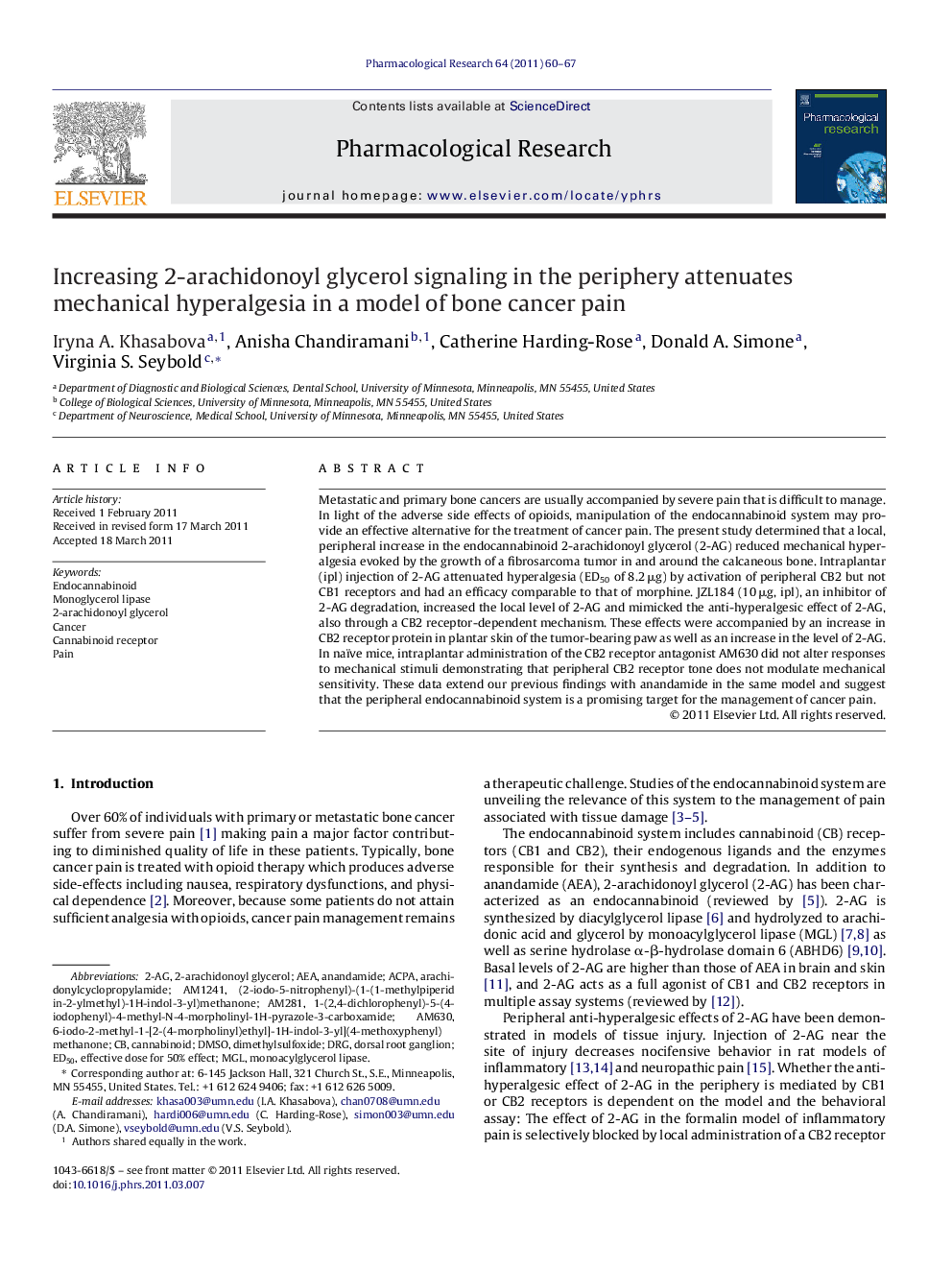| کد مقاله | کد نشریه | سال انتشار | مقاله انگلیسی | نسخه تمام متن |
|---|---|---|---|---|
| 2562415 | 1127106 | 2011 | 8 صفحه PDF | دانلود رایگان |

Metastatic and primary bone cancers are usually accompanied by severe pain that is difficult to manage. In light of the adverse side effects of opioids, manipulation of the endocannabinoid system may provide an effective alternative for the treatment of cancer pain. The present study determined that a local, peripheral increase in the endocannabinoid 2-arachidonoyl glycerol (2-AG) reduced mechanical hyperalgesia evoked by the growth of a fibrosarcoma tumor in and around the calcaneous bone. Intraplantar (ipl) injection of 2-AG attenuated hyperalgesia (ED50 of 8.2 μg) by activation of peripheral CB2 but not CB1 receptors and had an efficacy comparable to that of morphine. JZL184 (10 μg, ipl), an inhibitor of 2-AG degradation, increased the local level of 2-AG and mimicked the anti-hyperalgesic effect of 2-AG, also through a CB2 receptor-dependent mechanism. These effects were accompanied by an increase in CB2 receptor protein in plantar skin of the tumor-bearing paw as well as an increase in the level of 2-AG. In naïve mice, intraplantar administration of the CB2 receptor antagonist AM630 did not alter responses to mechanical stimuli demonstrating that peripheral CB2 receptor tone does not modulate mechanical sensitivity. These data extend our previous findings with anandamide in the same model and suggest that the peripheral endocannabinoid system is a promising target for the management of cancer pain.
Figure optionsDownload as PowerPoint slide
Journal: Pharmacological Research - Volume 64, Issue 1, July 2011, Pages 60–67